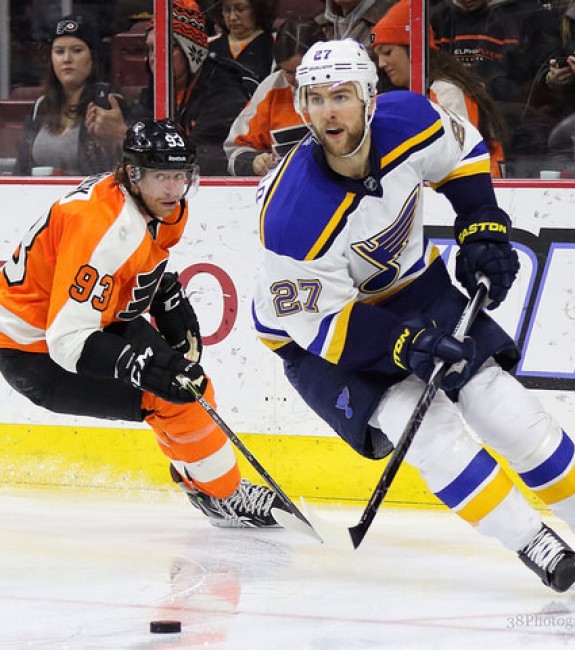The NHL introduced a new format for games that go past the sixty minutes of regulation time: five minutes of three-on-three overtime. The thought was to open up the ice by reducing the number of skaters on each team by one and it’s working as a means of ending games earlier and reducing shootouts. It isn’t, however, working in St. Louis’ favor.
The Blues have won only one game under the new set-up out of five tries. Those lost points are the exact amount separating the Blues from the Central Division-leading Dallas Stars. Maybe St. Louis is behind the learning curve of the new format, but it’s an aspect of their game that needs solving before they’re looking back on missed opportunities come season’s end.
The good news is they’ve got a few options that seem promising and St. Louis certainly has the speed to overcome missteps in the five-minute frame.
The Obvious Trio: Tarasenko, Steen, Pietrangelo
It would be completely unrealistic and illogical to keep Vladimir Tarasenko on the bench during the pivotal moments of the game that make up overtime. For that reason he’s a shoe-in for nearly every seemingly successful combination. His speed and rather incredible shot make for the perfect combination with all of the open ice.

While the Russian can’t play the full five minutes it’s not a stretch to assume he’ll find himself on the ice for at least half of the overtime frame.
As far as his partners go, that’s where the Blues can be creative. Alexander Steen falls under the skilled, fast category that no. 91 is a part of so it would be logical to place him as the winger to Tarasenko’s center. Together their chemistry and overall offensive skill make for what could be a lethal combination.
On the defensive side the most obvious choice is Alex Pietrangelo. As half of the top pairing for the Blues Pietrangelo has posted 11 points (2G, 9A) for the team in 23 games played. He too has the speed to get back in the event of an odd man rush towards St. Louis’ net, which only makes him a more obvious three-on-three candidate.
The Wild Card Line: Troy Brouwer, Scott Gomez, Jay Bouwmeester
As far as the second three-player grouping goes the Blues have a little room to be creative. With injuries and healthy scratches factored in St. Louis can go in a few directions; however, this trio makes the most sense.
Scott Gomez is a talented, smaller center that proved his worth back in the pre-season to earn a spot on the Blues’ roster. He’s scored one goal and had seven assists for eight points through sixteen games this season, which is commendable for a veteran like himself.

Gomez would work alongside the slightly younger, but still offensively talented Troy Brouwer to complete the one-two punch of this second unit on the front end. Brouwer’s 13 points (5G, 8A) in 23 games this season coupled with his size, he stands 6’3”, 213 lbs., would be advantageous to juxtapose Gomez’s smaller stature.
On the defensive side of things Bouwmeester makes sense. He, like Brouwer, has the size to compete with just about any player on the opposition, while he can also provide a decent point shot. The downside to no. 19 is his lack of significant speed, which could leave the very open ice vacant in front of either Brian Elliott or Jake Allen.
Bottom Line
These are, however, only two of the three player line combinations. Head coach Ken Hitchcock will have to determine which lines he wants on the ice depending upon injuries and scratches on a nightly basis, but this grouping of six is at least worth a shot.
There’s no such thing as a sure thing in hockey and the same goes for overtime. While teams around the league try various methods to figure out what exactly works the best there will be missteps; however, the Blues need to try some different combinations in hopes of changing their trend of losing in the extra five-minute period.
What combinations do you think the Blues should use in 3-on-3 overtime? Leave your thoughts in the comments.